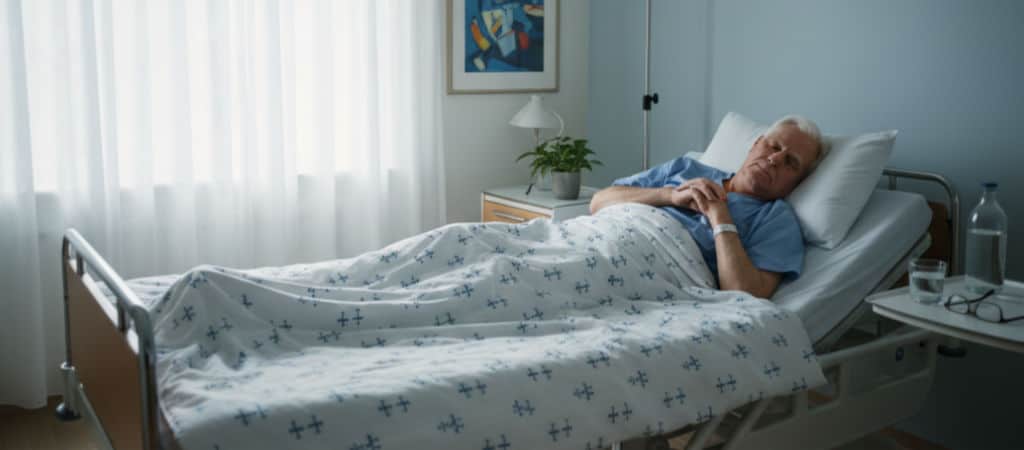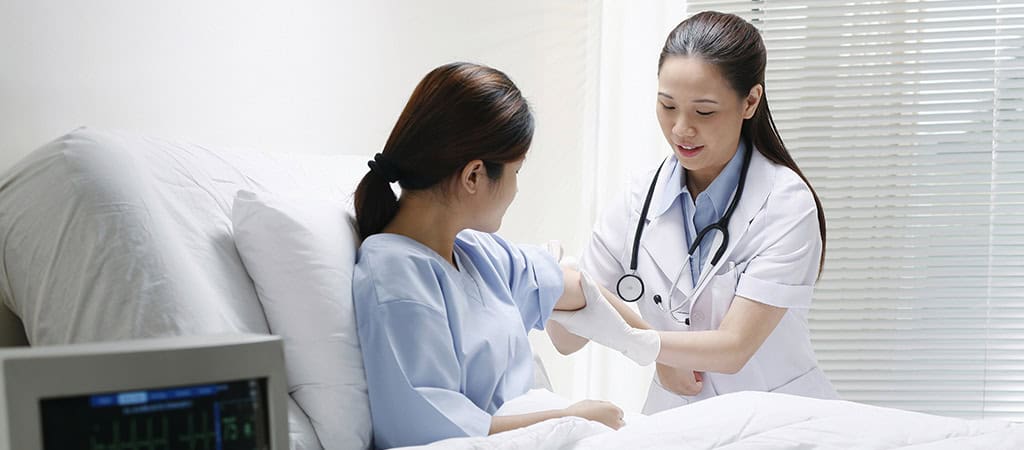
It may sound unlikely, but often brand new medical mattresses are full of holes. The string of tiny holes left by an ordinary seam in a mattress cover gives infected body fluids thousands of opportunities to penetrate our healthcare mattresses.
The mattress cover, the first line of defence of the medical mattress
If a healthcare mattress is to live up to its name, the mattress cover must also do its job.
Yet healthcare has major problems with mattresses where blood, urine and other biological contamination penetrate the surface layer.
On the inside, the bacteria have a good chance to multiply, and that causes major problems. Every unsuspecting patient who uses the mattress is now at risk of infection. Yes, even healthcare workers risk exposure to a potentially dangerous infection if the mattress cover doesn't stop the contamination.
The problem is described in detail in an article published by infectionpreventioncontrol.net. The link between mattress covers, mattress contamination and infections is often overlooked. All too often, it is only when an outside party is called in to carry out a thorough mattress inspection that the problem is discovered. And when the dangers hidden in healthcare mattresses are finally uncovered, the damage is already done.
Inspection of medical mattresses, an effective tool
So how do you avoid this scenario? One important antidote is regular reviews and inspections. It is rarely enough to dutifully do the minimum necessary to comply with nationally established requirements and regulations.
The driving force should of course be to protect their patients and staff. When that is the stated goal, it is natural to raise the level of ambition.
Reviews make it easy to identify mattresses that are no longer fit for purpose. In this context, it is worth noting that bright and semi-transparent covers make it easier to detect contamination in good time. Regular mattress inspections highlight risk areas and potential hot spots. This analysis provides a good basis for action plans to minimise risks.
Facilitate effective cleaning
Whatever part of the healthcare sector we are talking about, infection prevention should be high on the priority list. Care homes for the elderly as well as wards and emergency departments are vulnerable to the spread of bacteria and viruses, leading to dangerous infections.
If the pandemic has taught us anything, it's that frequent cleaning and disinfection really does make a difference. It is essential to have an infection prevention action plan that includes cleaning the healthcare mattress.
Laminated covers instead of covers with holes
With all we know about the dangers of healthcare-associated infections, does it sound like common sense to design healthcare mattresses without hidden holes and crevices? Yet the healthcare industry continues to buy them.
There's a lot to be gained by choosing mattress covers that are easy to clean from the start - and don't come with 2,000 holes.
Instead of stitched covers, healthcare mattresses are available with laminated covers that are waterproof and designed to withstand healthcare cleaning routines. These mattresses can be wiped and disinfected. They are also semi-transparent and immediately reveal if any contamination has entered the mattress without the need for staff to open zips to check. Staff can therefore devote more time to nursing without compromising infection control.
Lastly, and most importantly, it leads to healthier patients.
And that's the purpose of all care, isn't it?
Järven Health Care's LENTEX range has a unique laminate with no seams.
The aim is to help reduce the number of healthcare-associated infections.
Source list
[1] The European Centre of Disease Prevention and Control (ECDC).
[2] Journal of Applied Microbiology, Volume 99 Sept 2005.
[3] Eurostat; Average length of stay for hospital in-patients, 2018.
[4] Moisture and mould related health problems, Senior Physician Jonas Brisman, Occupational and Environmental Medicine/Sahlgrenska University Hospital 2018
[5] Gov.uk; Alerts and recalls for drugs and medical devices, 5 January 2010
[6] Fda.gov; Medical device alerts, February 2013.





